| Soar can provide you with efficient, flexible and sustainable power generation equipment. There are various forms of power plant, and different types can be selected as per different classification criteria. According to the utility, structure, fuel and power form of power plant, classified as follows:
1 Classification according to types of energy
The Power Plants can be classified into Thermal power plant, Hydro power station, Wind power station, Solar energy power station, Ocean energy power station, and Nuclear power plant, etc.
1.1 A thermal power plant refers to a plant that produces electrical energy by coal, oil, and natural gas as fuel. Its basic production process is as following: Fuel burns to heat water in a boiler to generate steam, whereby the chemical energy of the fuel is converted into heat; then the turbine is driven by steam pressure to rotate, whereby the heat energy is converted into mechanical energy. Then the steam turbine drives the alternator to rotate, converting the mechanical energy into electrical energy.
According to fuel classification, the thermal power plants can be divided into coal-fired power plants (using boilers and steam turbines to generate electricity, most of which use gas turbines for coal gasification), fuel oil power plants, gas power plants (including gas ICE and gas turbine power plants, wherein large-scale power plants use gas turbines to generate electricity), and heat recovery power stations (using various waste heat from industrial enterprises to generate electricity), etc.
1.2 A hydroelectric station refers to a energy station that uses the kinetic energy of a powerful current generated by a water level difference to generate electricity.
Hydroelectric power is the use of hydraulic power to drive the turbine to turn, and transform the water into mechanical energy. The turbine drives the alternator to generate electricity and convert the mechanical energy into electrical energy. Hydraulic power generation is the process of transforming potential energy of water into mechanical energy and then into electrical energy.
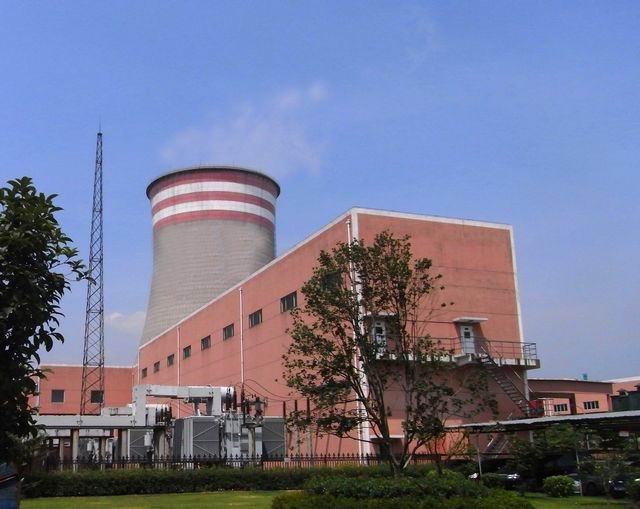
Thermal Power Plant |
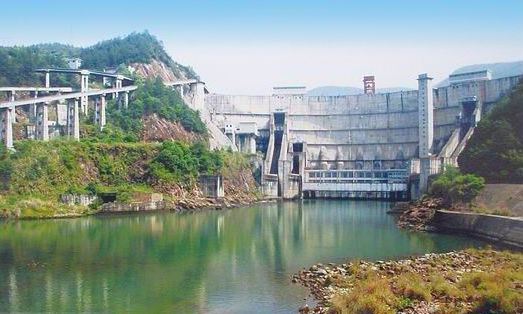
Hydro Power Station |
|
2 Classification according to prime mover
The Power Plants can be classified into Engine Power Plant and Turbine Power Plant.
2.1 Engine Power Plant:The Engine power plant is classified according to different fuels, and can be classified into three categories: Gas engine power plant, Fuel oil engine power plant and Dual fuel engine power plant.
● Gas Engine Power Plant: The Gas power plant refers to the Energy station which operate using natural gas or other gases as fuel, with Engine as prime mover to drive the alternator, and convert mechanical energy into electrical energy and thermal energy. Most of them are small and medium sized power plant less than 250MW.
● Fuel Oil Engine Power Plant: Fuel oil power plant refers to the Energy station which operate using liquid fuel as fuel, with Engine as prime mover to drive the alternator, and convert mechanical energy into electrical energy and thermal energy. Generally them are small and medium sized power plant less than 250MW, with small investment, short construction term, high reliability and easy maintenance. Its fuel includes Diesel, Heavy fuel oil, Crude oil, and Liquid biofuel, etc.
● Dual Fuel Engine Power Plant: It refers to the Energy station that run on both natural gas and liquid fuels, with I.C.E as prime mover to drive the alternator, and convert mechanical energy into electrical energy and thermal energy. suitable for location on gas shortage or gas supply instability.
2.2 Turbine Power Plant: It can be classified into Gas Turbine Power Plant, Steam Turbine Power Plant (Such as coal-fired power stations), Hydro Power Station, etc.
● Gas Turbine Power Plant: The Gas Turbine Power Plant refers to the Energy station which operate using gas or fuel oil as fuel, with gas turbine as prime mover to drive the alternator, and convert mechanical energy into electrical energy and thermal energy. Mostly used for cogeneration or combined cycle power generation projects. At present, the gas turbine generator set is small to a few megawatts, large-scale gas turbine power alone has more than 500MW.
● Steam Turbine Power Plant: Including Coal-fired power stations, Fuel oil power plants and Nuclear power plants.
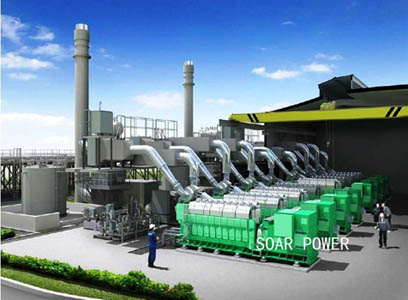
Fuel Oil I.C.E Power Plant |
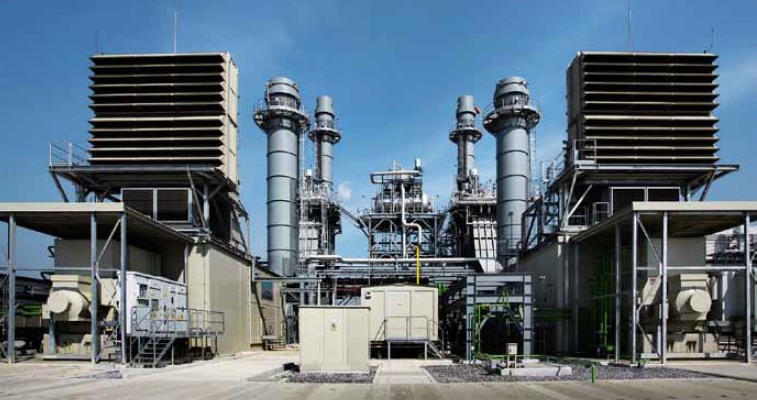
Gas Turbine Power Plant |
|
3 Classification according to usage
The Power Plants can be classified into Stationary Power Plant, Mobile Power Plant, Floating Power Plant and Containerised Power Plant, etc.
3.1 Stationary Power Plant:It includes two types: basic power plant and emergency/ standby power plant, Many factors should be consider determine the type of power plant, and one of the most critical is the load factor.
3.2 Mobile Power Plant:Usually Consists by the power generation vehicle and auxiliary vehicle. It is an independent and complete power generation device or system. Mobile power plants are mainly divided into three types: automobile power station, train power station and trailer power station. and is used on many fields of urban emergency power supply, rescuing operation, emergency power supply and military equipment etc.
3.3 Floating Power Plant(Power Barge):Power Barge refers to the power plant located in a special ship, which can supply electricity, heat and fresh water for natural disasters, offshore operations hard to be covered by the power grid, and remote areas.
3.4 Containerised Power Plant:Containerized Power Plant (CPP) is composed of one or more Containerized generator sets, with a body container, an auxiliary container and a storage tank, including the internal combustion engine power station and the gas turbine power plant.
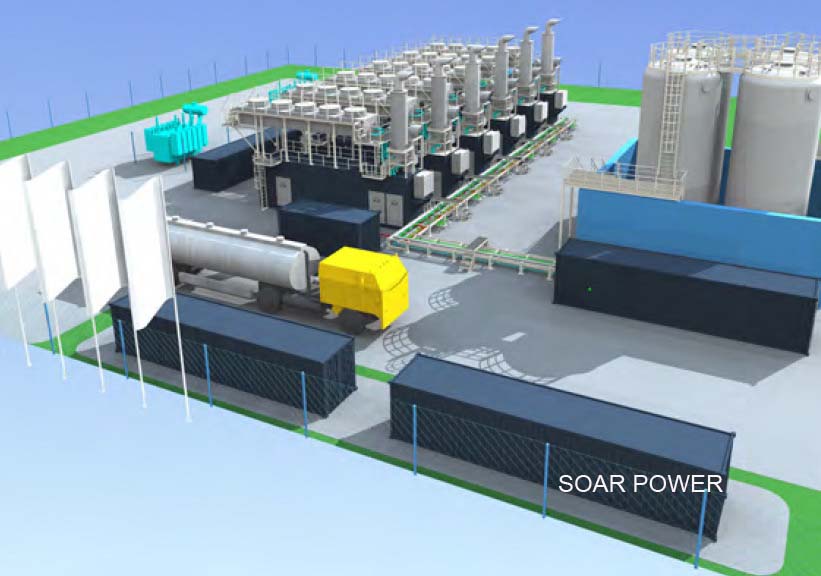
Containerised Power Plant |
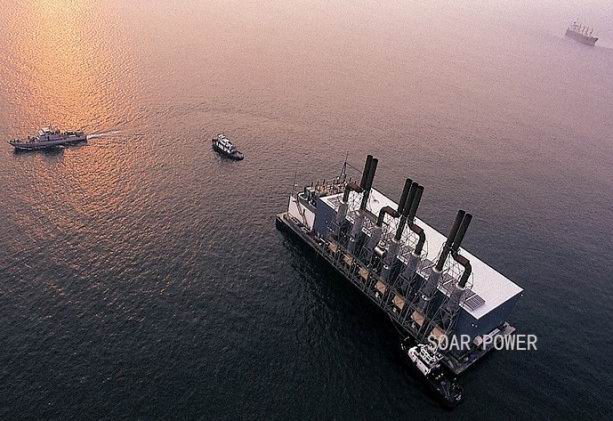
Power Barge |
|
4 Classification according to structure
The Power Plants can be classified into the Simple Cycle Power Plant, Cogeneration Power Plant, Combined Cycle Power Plant, and Hybrid Power Plant.
4.1 Simple Cycle Power Plants(SCPP):Only for power generation. SCPP is consist of a single or multiple gas turbine (or I.C.E) driven generator sets. The main components of the gas turbine are the air compressor, the combustor and the turbine, which drives both the air compressor and an electric power generator. We can provide flexible and reliable solutions to enable the grid to respond quickly to flexible load demands. The focus is on robust operation, high availability, fast start-up as well as start reliability and the capability for quick transient load responses. SCPP are often used in remote areas as decentralized local power generation sets and as emergency or peaking units. The generating efficiency of gas turbine is about 28-38%, and the efficiency of the internal combustion engine is about 40-48%.
4.2 Cogeneration Power Plants:Cogeneration, also known as Combined Heat and Power (CHP), refers to a group of proven technologies that operate together for the concurrent generation of electricity and useful heat in a process that is generally much more energy-efficient than the separate generation of electricity and useful heat. Both technologies CHP and CCHP are well-established, high-efficient, cost-effective and environmentally-friendly solutions. Widely used in Distributed Energy Resources projects making an important contribution to the global energy demand.
4.3 Combined Cycle Power Plant(CCPP):CCPP is the Combined cycle power generation system composed of gas turbines, generators, boilers, steam or heating type steam turbine. The system converts the waste gas discharged by the gas turbine into steam through the waste heat boiler, and then the steam is injected into the steam turbine to generate electricity, or the spent steam can be used to heating after generation.
4.4 Hybrid Power Plants(HPP):HPP refers to a kind of power generation system combining two types of energy, which common form is hybrid power generation combined by renewable energy sources (wind power, hydroelectricity, solar energy, ocean energy, etc.) and fossil power. Renewable energy sources hybridized with liquid fuel or gas fuel engines are the perfect synergy to take the advantages of both electricity sources. The renewable energy share delivers free electricity with a green footprint and highly efficient engines care of reliable base load supply or flexibly available backup for obtaining a continuous power output.
For more power station types, please enter here: Typical power plants.
|
|
|
|